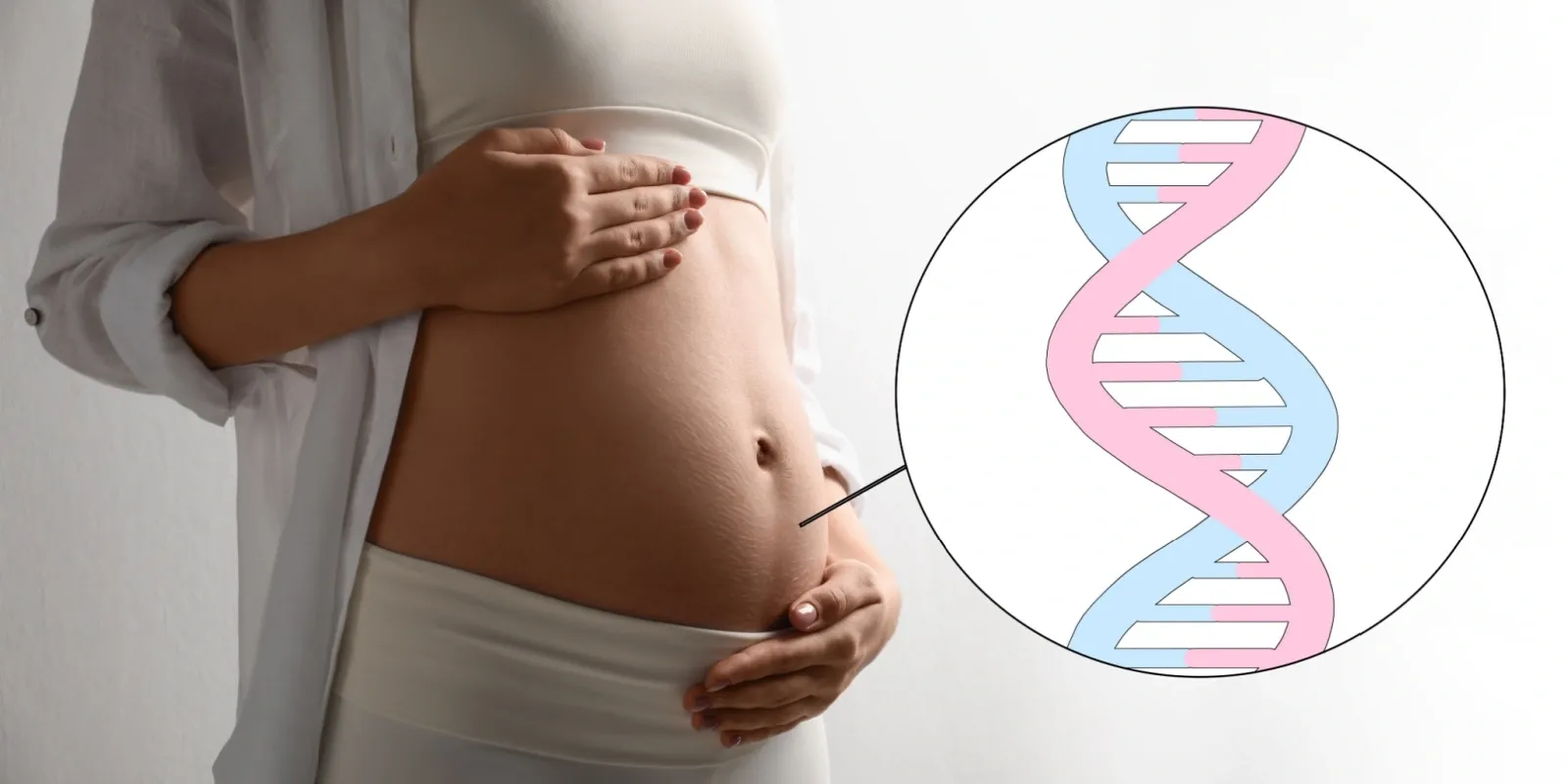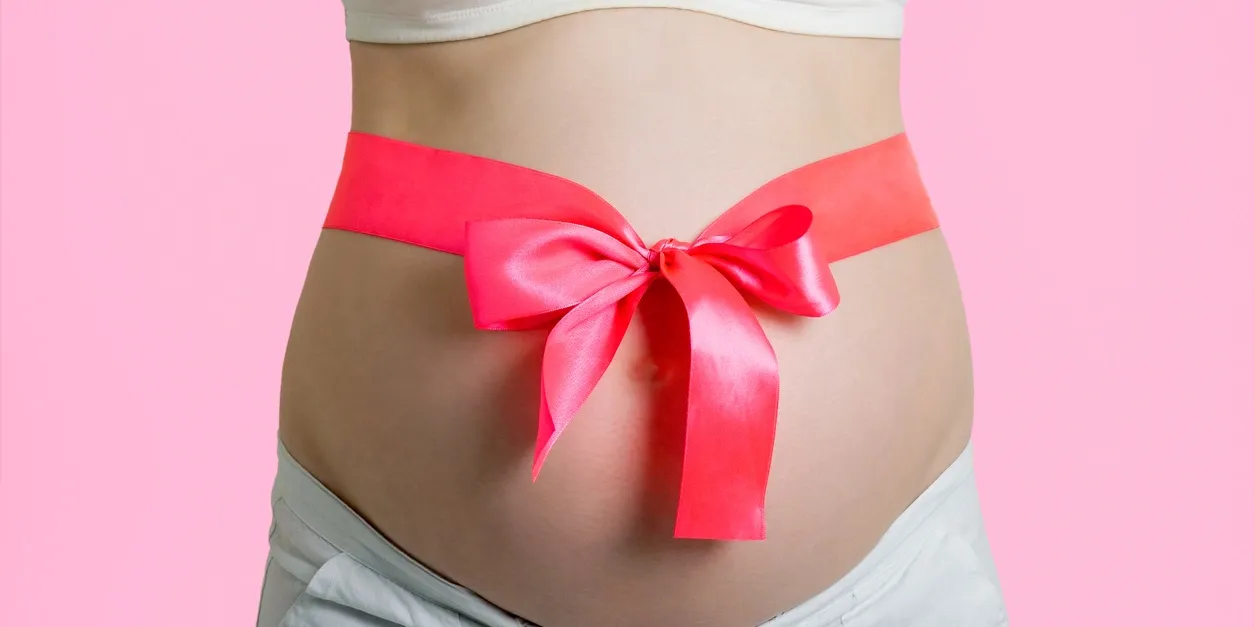Online Booking
We are open 6 days a week including Saturdays & Sundays.
Same day appointments available.
Click below to check availability and choose your preferred time for your appointment.
Panorama™, the most ordered NIPT, can assess conditions that can affect your baby’s health by doing a simple blood draw on you.1,2 A pregnant person’s blood contains DNA from them and also from their baby’s placenta. Panorama™ NIPT is a blood test performed during pregnancy that looks at the placental DNA to see if your baby has a high or low chance of having certain chromosomal conditions that could affect its health, along with providing your baby’s sex. Panorama™ delivers a personalized risk report to you and your clinician.
This test screens for the most common trisomies, triploidy and for 5 microdeletions. Microdeletions occur when a chromosome is missing a small piece of genetic information.
This package includes an early pregnancy scan.
Conditions Screened For
Trisomies:
- Trisomy 21 (Down Syndrome)
- Trisomy 18 (Edwards Syndrome)
- Trisomy 13 (Patau Syndrome)
- Sex chromosome aneuploides*: A sex chromosome aneuploidy results from an additional or missing sex chromosome. Approximately 1 in 400 babies born are born with a sex chromosome aneuploidy
Microdeletions:
- 22q11.2 microdeletion
- Prader-Willi Syndrome
- Angelman Syndrome
- 1p36 Syndrome
- Cri-du-chat Syndrome
Triploidy:
Babies with triploidy have a complete extra set of chromosomes for a total of 69 chromosomes instead of the usual 46.
Optional foetal sex chromosome screening
The Technology
- The only SNP*-based NIPT, designed to inform decisions during pivotal moments of pregnancy care.
- A differentiated, highly-accurate screening approach evaluates SNPs – the 1% of our DNA that makes us different from one another – to screen for common trisomies, aneuploidies and microdeletions.
- A sequencing platform of >13K SNPs enables Panorama to deliver a curated prenatal cfDNA screening test that accounts for all ethnicities and population variability.
* *SNP, single nucleotide polymorphism
The Procedure
- Please arrive 10 minutes before your appointment time. You will be welcomed at our clinic and asked to complete consent forms for the scan and for the genetic screening.
- When ready, the sonographer will welcome you in the consultation room, confirm your details, the reason for your scan and discuss any particular concerns you may have.
- The sonographer will perform a scan and will discuss with you what she / he are seeing.
- When ready, the sonographer will then proceed, with your consent, to take a sample of your blood from your arm.
- At the end of the appointment, you will be invited back to the reception room where you can collect your scan report.
- The results of your genetic screening should be expected indicatively within 10 days via an email from our clinic.
Results
Panorama™ offers a personalized report, which indicates whether your baby has a high or low chance for developing certain genetic conditions. Panorama™ NIPT results are available within 1 week from the time your sample is received at Natera.
Your report could state the following:
- Low Risk: A low risk result means that the chance that your baby has one of the conditions tested by Panorama is very unlikely but not zero — less than 1 in 10,000 for most conditions
- High Risk: Panorama is a screening test, which means that this test does not make a final diagnosis. A high risk result means that your pregnancy has a higher chance of having a specific genetic condition. However, you cannot know for sure if your baby has that condition based on screening results alone. If you receive a high risk Panorama result, speak with your healthcare provider (HCP) to discuss which next steps you could decide to pursue, such as genetic counseling, detailed ultrasound, and the option of diagnostic testing. All medical decisions should be made after discussion with your HCP regarding diagnostic testing during the pregnancy, like chorionic villus sampling (CVS) or amniocentesis, or testing the baby after birth.
- No results: About 1 in 65 tests could receive a nonreportable result.3 You should speak with your HCP about these result types and whether you should consider having a second blood draw to do the test again. There is also a small chance that Panorama will have a result relating to your genetics or your physical health
Accuracy in brief:
- >99% combined sensitivity for trisomies (T21, T18, T13)
-
83% clinical sensitivity for 22q11.2 deletions (0.5 Mb+ deletions)
-
>95% positive predictive value (PPV) for trisomy 21
-
Zero fetal sex errors in validation studies
Suitability
This test cannot currently be used by women carrying three or more babies (triplets and above), women who have used an egg donor or surrogate carrying more than one baby (twins or triplets), or those who have received a bone marrow transplant.
Trisomies
Trisomy 21: Down’s syndrome:
Babies with Down syndrome have an extra copy of the chromosome 21. This happens randomly due to alterations in either the egg or the sperm before birth. This change does NOT occur because of any actions by mum and dad before or during pregnancy. Probabilities of having a baby with Down Syndrome increase with maternal age however anyone may have a baby with Down Syndrome. Down syndrome causes learning disabilities that may be mild to severe and physical conditions also of varying severity, for example heart defects, which can impact on the lifespan of the affected person. Early intervention in offering tailored care means that many children with this condition can live fulfilling and productive lives.
Trisomy 18: Edward’s syndrome:
Babies with Edward’s syndrome have an extra copy of the chromosome 18. This happens randomly due to alterations in either the egg or the sperm before birth. This change does NOT occur because of any actions by mum and dad before or during pregnancy. Edwards Syndrome causes severe learning disabilities and birth defects. Sadly, most pregnancies of a baby with Edwards Syndrome will miscarry. If born alive, the life expectancy will be mostly of a few weeks, a small number will survive their 1st birthday.
Trisomy 13: Patau’s syndrome:
Babies with Patau syndrome have an extra copy of the chromosome 13 in some or all of the body cells. This happens randomly due to alterations during conception. This change does NOT occur because of any actions by mum and dad before or during pregnancy. In some cases Patau syndrome is caused by a rearrangement of genetic material of the chromosome 13 with other chromosomes: in this case, the condition can be inherited. Babies affected by Patau syndrome suffer severe heart defects and malformations. Patau syndrome may manifests itself in different ways, known as chromosome 13 trisomy, chromosome 13 mosaicism and chromosome 13 partial trisomy. Depending on the type they have, babies will have different life expectations. In the case of full trisomy, sadly most pregnancies will miscarry or experience still birth.
Microdeletions:
22q11.2 deletion:
22q11.2 deletion syndrome, also called DiGeorge syndrome or Velo-Cardio-Facial syndrome (VCFS), is caused by a missing piece of chromosome number 22. About one in every 2,000 babies is born with 22q11.2 deletion syndrome. The majority of children with this disorder have heart defects, immune system problems, and specific facial features. Most children with 22q.11.2 deletion syndrome have mild-to-moderate intellectual disability and speech delays; some will also have low calcium levels, kidney problems, feeding problems, and/or seizures. About one in five children with 22q11.2 deletion syndrome have autism spectrum disorder; 1 in 4 adults with 22q11.2 deletion syndrome have a psychiatric illness, like schizophrenia.
Prader-Willi Syndrome:
Prader-Willi syndrome occurs when either a small piece of chromosome 15 is missing or when both copies of chromosome 15 come from the same parent (called uniparental disomy, or UPD). Babies with Prader-Willi syndrome have low muscle tone and problems with growth and feeding. Children with Prader-Willi syndrome have delayed milestones, short stature, rapid weight gain leading to obesity, and intellectual disability. About 1 in 10,000 babies are born with Prader-Willi syndrome.
Angelman Syndrome:
Angelman syndrome happens when either a small piece of chromosome 15 is missing, or when both copies of chromosome 15 come from the same parent (called uniparental disomy, or UPD). About 1 in 12,000 babies are born with Angelman syndrome. Babies and children with Angelman syndrome have severe intellectual disability, delayed milestones, seizures, and problems with balance and walking.
1p36 Deletion Syndrome:
1p36 deletion syndrome, also referred to as Monosomy 1p36 syndrome is caused by a missing piece of chromosome 1. Children with 1p36 deletion syndrome have intellectual disabilities. Most have heart defects and weak muscle tone. About half of affected individuals have seizures (epilepsy), behavioral problems, and hearing loss. Some children with 1p36 deletion syndrome also have vision problems or additional birth defects of other organs. About 1 in 5,000 newborn babies has 1p36 deletion syndrome.
Cri-du-chat Syndrome:
A missing piece of chromosome 5 causes Cri-du-chat syndrome, also called 5p- (5p minus) syndrome. The name “Cri-du-chat” was given to this syndrome due to the high-pitched, cat-like cry that babies with this syndrome often make. Babies with Cri-du-chat syndrome typically have low birth weight, a small head size, and weak muscle tone. Feeding and breathing problems are common in infancy. Children with this disorder have moderate-to-severe intellectual disability, including speech and language delays. They may also have growth delays, behavior problems, and some have curvature of the spine (scoliosis). About one in every 20,000 babies is born with Cri-du-chat syndrome. They may also have heart defects, growth delay, behavior problems and some have curvature of the spine.
Sex chromosome’s aneuploides
Monosomy X or XO (Turner syndrome):
Turner syndromes affects baby girls, they will only have one X chromosome instead of 2. There is no link to the mother’s age and this mutation happens randomly at conception. Pregnancies with Turner syndrome are likely to miscarry. Where babies are born, symptoms vary from individual to individual, they include underdevelopment of the reproductive system, heart and kidney problems and affected girls are shorter than average. They may be able to lead a relatively normal life with regular checks.
XXY syndrome (Klinefelter Syndrome):
Klinefelter syndrome affects baby boys that are born with an extra copy of the chromosome X; this may be the case in all cells or just in some (mosaic Klinefelter). Such alteration seems to happen randomly. Boys with Klinefelter syndrome experience behavioural issues and learning difficulties; symptoms may be mild and boys may live healthy and normal lives, but they will be more vulnerable to developing other medical conditions
Triple X syndrome:
Baby girls with triple X syndrome are born with three chromosomes X; symptoms may be mild and range from physical features such as being taller than average, to learning difficulties and risk of ovarian failure. This condition is relatively common but rarely diagnosed. It may be in mosaic form (not all cells being affected).
XYY syndrome (Jacob’s Syndrome):
Baby boys with Jacob’s syndrome are born with an extra copy of the chromosomes Y; symptoms may include some learning difficulties or behavioural problems, they are not normally suffering birth defects.
Triploidy
Babies with triploidy have a complete extra set of chromosomes for a total of 69 chromosomes instead of the usual 46. At 10 weeks gestation, one in 1,000 pregnancies is affected by triploidy. It is extremely rare for these pregnancies to reach term as they typically spontaneously miscarry early in pregnancy. Those few liveborns usually pass away within days of delivery due to heart, brain, and kidney problems. Babies with triploidy also often have birth defects affecting the extremities and face.
Carrying a baby with triploidy can increase a mother’s risk for a variety of conditions: pre-eclampsia (which can lead to seizures) and excessive bleeding after delivery. In rare instances, triploid pregnancies can persist and progress to a type of cancer called choriocarcinoma. Knowing about triploidy allows the physician to monitor the health of the mother appropriately.


